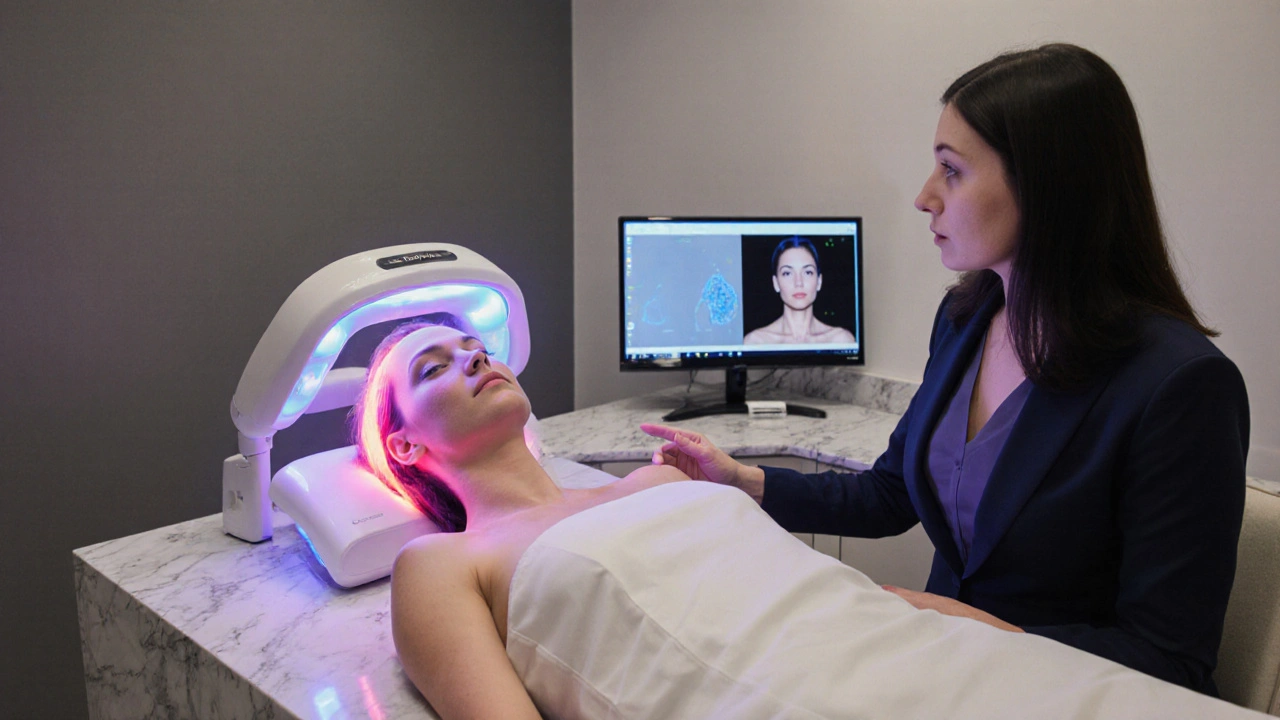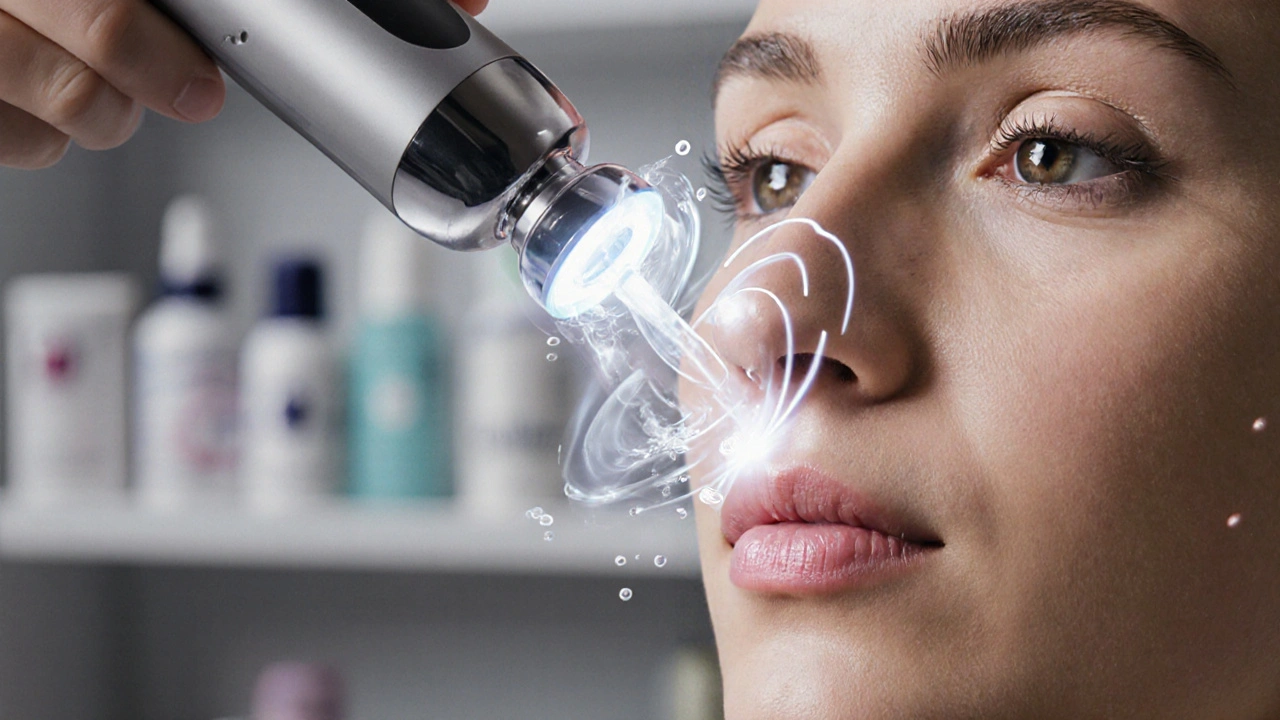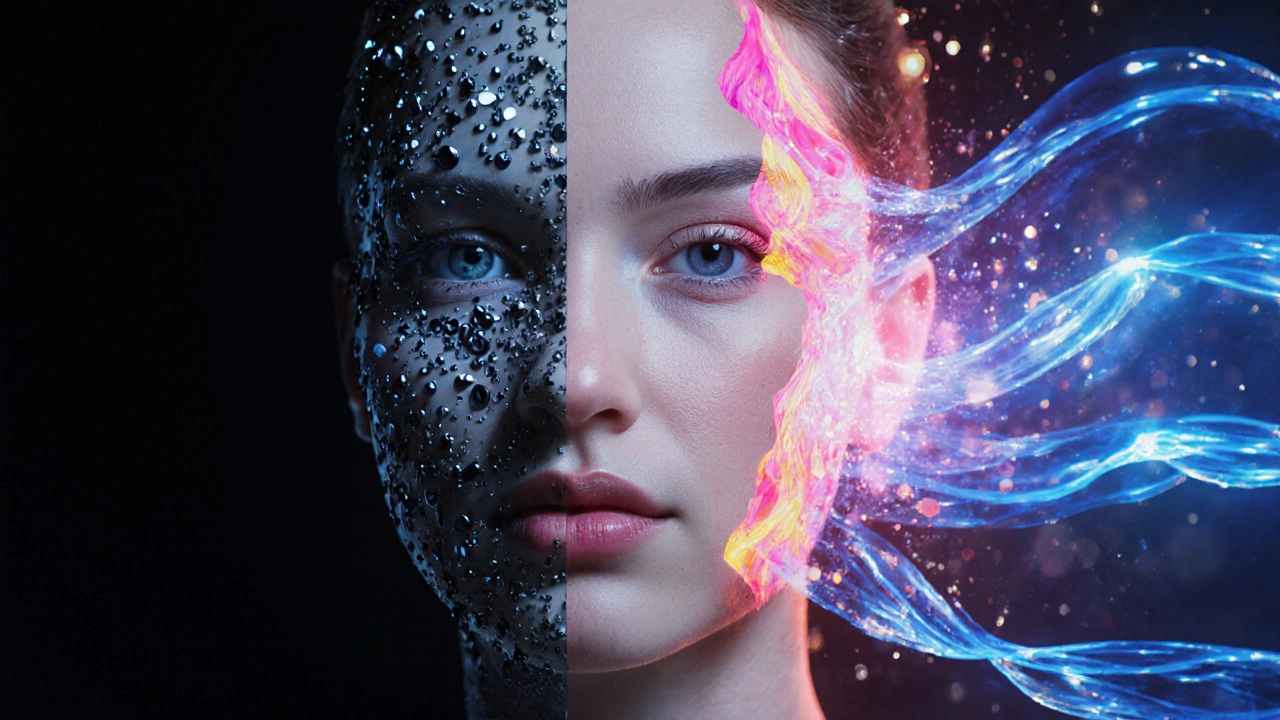
London has over 200 facial clinics offering Hydrafacial, chemical peels, and LED light therapy-but only a handful deliver real results without the hype. If you’ve spent hours scrolling through Instagram ads promising glowing skin in one session, you’re not alone. The truth? Most clinics overpromise. The right one? It changes your skin’s texture, clears stubborn acne, and fades dark spots without downtime.
What Actually Works in London’s Facial Clinics
Not all facials are created equal. A $150 Hydrafacial at a mall kiosk won’t touch what a medical-grade treatment can do. The difference? Hydrafacial in London’s top clinics uses medical-grade serums, real suction power (not just a gentle vacuum), and customized protocols based on skin analysis-not guesswork. Clinics like The London Skin Clinic and Skin Authority use the latest Vortex-Fusion technology, which combines exfoliation, extraction, and infusion in one go. Results? Brighter skin in 24 hours, reduced pore size after three sessions, and fewer breakouts if you have oily or acne-prone skin.
Chemical peels are another story. Many places still use outdated glycolic or salicylic peels. The best clinics in London use TCA (trichloroacetic acid) peels at 15-25% concentration, layered precisely under medical supervision. These aren’t for beginners. They’re for people with sun damage, melasma, or deep acne scars. A 2024 study from the British Association of Dermatologists showed that 82% of patients saw visible improvement in pigmentation after two TCA peels spaced four weeks apart. The catch? You need a pre-treatment consultation. No clinic worth your time will skip this.
LED therapy is the quiet hero. Blue light kills acne bacteria. Red light boosts collagen. Near-infrared reduces inflammation. The top clinics don’t just stick you under a cheap LED panel for 15 minutes. They use FDA-cleared devices like the Omnilux Revive or MZ Skin Light Therapy Mask, delivering precise wavelengths at proven intensities. One patient in Chelsea saw her post-acne redness fade by 70% after eight weekly sessions. No needles. No downtime. Just consistent, science-backed light.
How to Pick the Right Clinic
Don’t book the first clinic with five-star Google reviews. Look for three things:
- Qualified practitioners - Are they registered nurses, dermatologists, or aesthetic medical practitioners? Avoid spas where a beauty therapist with a weekend course runs your treatment.
- Before-and-after photos - Real ones. Not filtered. Look for consistency in lighting, angles, and timeframes. If every photo looks like a magazine spread, it’s probably staged.
- Transparency on ingredients - A good clinic will tell you exactly what’s in the serums. Hydrafacial serums should list active ingredients like hyaluronic acid, antioxidants, and peptides-not just “proprietary blend.”
Top clinics in London like The Aesthetics Clinic (Mayfair) and Dermacare (Knightsbridge) offer free skin analysis using VISIA skin scanners. These machines map your skin’s texture, pores, pigmentation, and even UV damage. You walk out with a report-not a sales pitch.
Hydrafacial vs. Chemical Peels vs. LED: What’s Best for You
| Treatment | Best For | Typical Sessions | Downtime | Price Range (London) |
|---|---|---|---|---|
| Hydrafacial | Dull skin, enlarged pores, mild acne, dehydration | 4-6 weekly, then monthly maintenance | None | £120-£220 |
| Chemical Peel (TCA) | Deep sun damage, melasma, acne scars, fine lines | 2-3 monthly, then quarterly | 3-7 days peeling | £300-£550 |
| LED Therapy | Acne, redness, inflammation, early aging | 8-12 weekly, then biweekly | None | £60-£100 per session |
If you’re new to treatments, start with Hydrafacial. It’s safe, effective, and builds your skin’s resilience. If you’ve tried everything and still have stubborn pigmentation, a TCA peel is your next step-but only under a dermatologist’s care. LED therapy works best as a maintenance tool. Use it between peels or after Hydrafacials to lock in results.

Pitfalls to Avoid
Here’s what goes wrong in 60% of cases:
- Booking a peel after a vacation in the sun. Sun exposure before a peel increases risk of burns and permanent dark spots.
- Using retinoids or exfoliants 3 days before a treatment. This makes your skin hypersensitive.
- Thinking one session is enough. Hydrafacial gives a glow. It doesn’t erase years of damage. Consistency beats intensity.
- Choosing based on price alone. A £40 LED session at a beauty salon uses low-grade devices. You’re paying for the machine, not the service.
One client in Camden booked a cheap Hydrafacial at a clinic that reused tips. She developed a bacterial infection. It took six weeks to heal. Always ask if devices are single-use or sterilized between patients.
Where to Go in London
These clinics consistently rank high for results, safety, and transparency:
- The London Skin Clinic (Belgravia) - Uses the latest Hydrafacial MD with real-time skin analysis. Offers bundled packages with LED.
- DermaSolutions (Marylebone) - Specializes in TCA peels for darker skin tones. No cookie-cutter plans.
- LightSkin Clinic (Covent Garden) - Focuses on LED therapy with custom wavelength programs. Great for rosacea and acne.
- Dr. Nisha Patel Aesthetics (Kensington) - Medical director is a dermatologist. Offers all three treatments with full pre- and post-care guidance.
Book a consultation first. Most offer free 30-minute skin assessments. Use this time to ask: “What’s the expected improvement for my skin type?” and “What happens if I have a reaction?” If they dodge the question, walk out.

What to Expect After Your Treatment
After a Hydrafacial, your skin will look fresh and feel smooth. You might get slight redness for an hour. No peeling. You can wear makeup right away.
After a TCA peel, expect flaking between days 2-5. Your skin might look worse before it gets better. Avoid sun, sweat, and harsh products for a week. Use a gentle moisturizer with ceramides.
After LED, nothing changes immediately. You won’t feel anything. But after 4-6 sessions, your skin tone evens out, and breakouts become less frequent. It’s subtle-but lasting.
Don’t expect miracles. But if you’re consistent, you’ll see results that last months-not days.
Frequently Asked Questions
How often should I get a Hydrafacial in London?
For maintenance, every 4-6 weeks is ideal. If you’re treating acne or sun damage, start with weekly sessions for 4-6 weeks, then switch to monthly. Overdoing it can irritate your skin. Most clinics recommend no more than one Hydrafacial per month unless under medical supervision.
Can I do chemical peels if I have dark skin?
Yes-but only with the right provider. Darker skin is more prone to hyperpigmentation after peels. Clinics like DermaSolutions in Marylebone use lower concentrations of TCA and apply them in layers to reduce risk. Always ask for a patch test first. Avoid glycolic or Jessner peels-they’re riskier for melanin-rich skin.
Is LED therapy safe during pregnancy?
Yes. Unlike chemical peels or retinoids, LED therapy has no systemic effects. Blue and red light only work on the skin’s surface. Many prenatal clinics in London now offer LED as a safe way to manage acne and redness during pregnancy. Just avoid infrared if you’re sensitive to heat.
How long do results last after a chemical peel?
Results from a TCA peel can last 6-12 months, depending on your skin care routine. Sun protection is non-negotiable. Without it, pigmentation returns fast. Pair your peel with daily SPF 50+, vitamin C serum, and gentle exfoliation twice a week to extend results.
Can I combine Hydrafacial with LED therapy in one visit?
Absolutely. Many top clinics combine them. Hydrafacial clears debris and boosts absorption, then LED locks in hydration and reduces inflammation. A 90-minute combo session costs £200-£280 but gives you the benefits of both treatments without extra downtime. It’s the most efficient option for busy professionals.
Next Steps
If you’re ready to try one of these treatments, start with a consultation. Don’t jump into a peel or Hydrafacial without knowing your skin type. Book with a clinic that uses medical-grade equipment and licensed practitioners. Track your progress with photos taken in the same lighting every 4 weeks. And remember-your skin doesn’t need a miracle. It needs consistency, care, and the right expert.